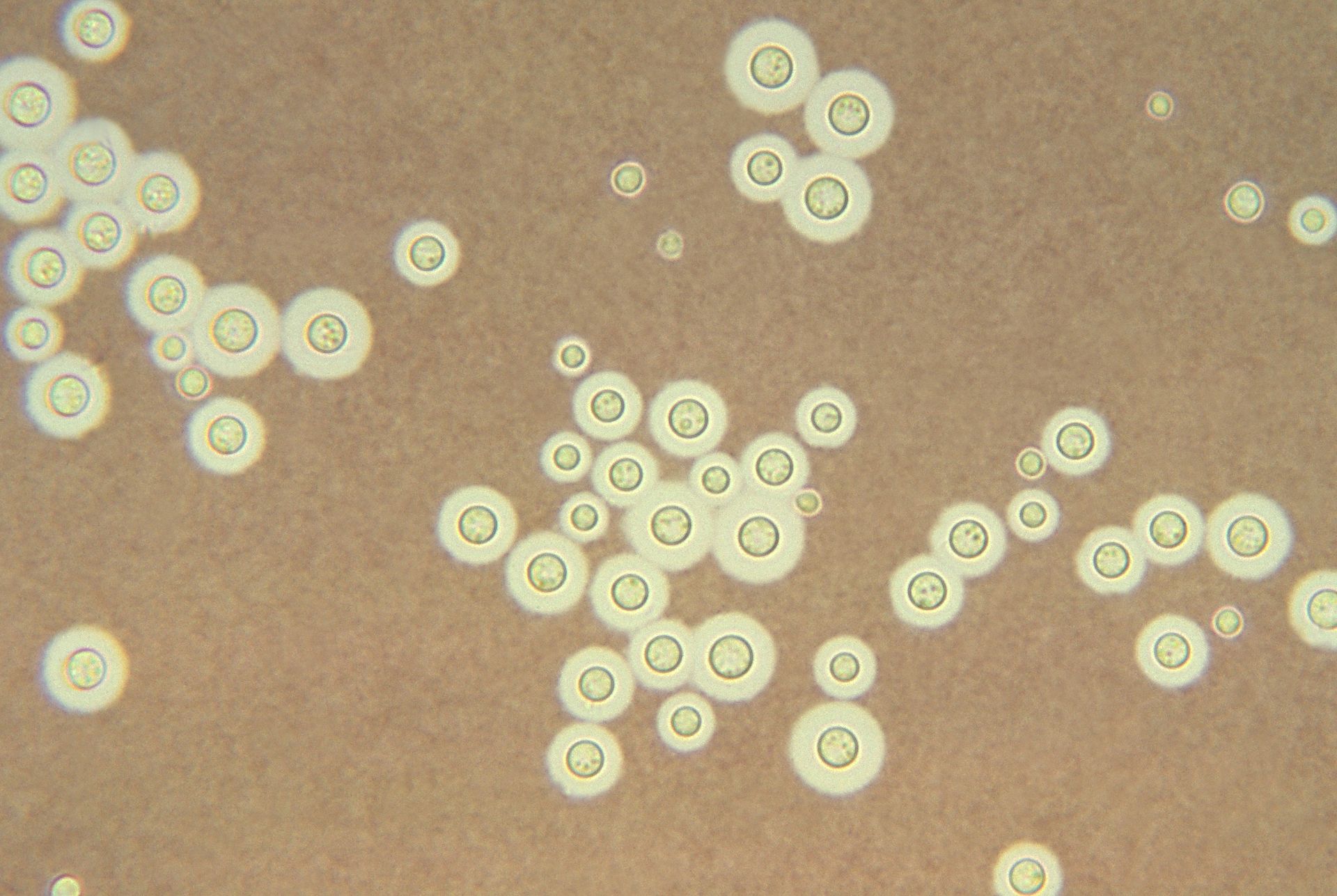Cryptococcosis pathophysiology
|
Cryptococcosis Microchapters |
|
Diagnosis |
|---|
|
Treatment |
|
Case Studies |
|
Cryptococcosis pathophysiology On the Web |
|
American Roentgen Ray Society Images of Cryptococcosis pathophysiology |
|
Risk calculators and risk factors for Cryptococcosis pathophysiology |
Editor-In-Chief: C. Michael Gibson, M.S., M.D. [1]; Associate Editor(s)-in-Chief: Serge Korjian M.D.; Yazan Daaboul, M.D.
Overview
Infective cryptococcal species are ubiquitous and natural exposure by inhalation is very common. Cryptococci are intracellular pathogens. Once they are phagocytosed, they germinate and multiply within the macrophages. The immune response to cryptococcal infection is highly dependent on host T-cell function, and interferon-γ and TNF-α signaling. Microscopically, cryptococci are characterized by a thick mucopolysaccharide capsule with a refractile center.
Pathophysiology
- Infective cryptococcal species are ubiquitous and natural exposure is very common.
- Infection occurs by inhalation of aerosolized, dessicated basidiospores.
- Once these spores reach the alveoli, they are phagocytosed by the alveolar macrophages without prior opsonization (usually required for yeast forms).
- Cryptococci are intracellular pathogens. Once they are phagocytosed, they germinate and multiply within the macrophages.
- Activated macrophages are capable of destroying the yeast forms that develop; however, non-activated macrophages act as germination centers for cryptococci.
- Cryptococci have the ability of forming giant cells that resist phagocytosis and have been hypothesized to play a role in latent infections and reactivation.
- Cryptococci also have the ability of changing the number of sets of chromosomes during infection, this has been associated with heteroresistance to certain antifungal agents.
- After exposure to desiccated yeast cells or spores, patients may clear infection or contain it within granulomata as a latent infection, or it may disseminate depending on host immune status or other less well understood mechanisms.
- Disseminated disease occurs among patients with compromised cell-mediated immunity.
- The immune response to cryptococcal infection is highly dependent on host T-cell function, and interferon-γ and TNF-α signaling.
- Granuloma formation can also be seen and may also be responsible for reactivation in patients with immunocompromised states.[1][2]
Microscopic Pathology


- Cryptococcus exists in yeast form.
- It is round/ovoid and approximately 5-15 μm (resembles Histoplasma or Candida, but often larger).
- It is characterized by a thick mucopolysaccharide capsule with a refractile center.
- India ink staining is used for easy visualization of the capsule in cerebrospinal fluid.[3]
- It has a tear drop-shaped budding pattern which is useful in differentiating Cryptococcus from Blastomyces and Histoplasma.
- Cryptococcal infections are usually accompanied by very little inflammation.
- Cryptococcus stain positive with methenamine silver, Alcian blue, and PAS (may be confused with corpora amylacea in the CNS).[4]
Cryptococcosis (PAS stain)
{{#ev:youtube|ZG0AcmtBLe4}}
References
- ↑ Brizendine KD, Baddley JW, Pappas PG (2011). "Pulmonary cryptococcosis". Semin Respir Crit Care Med. 32 (6): 727–34. doi:10.1055/s-0031-1295720. PMID 22167400.
- ↑ May RC, Stone NR, Wiesner DL, Bicanic T, Nielsen K (2015). "Cryptococcus: from environmental saprophyte to global pathogen". Nat Rev Microbiol. doi:10.1038/nrmicro.2015.6. PMID 26685750.
- ↑ Zerpa R, Huicho L, Guillén A (1996). "Modified India ink preparation for Cryptococcus neoformans in cerebrospinal fluid specimens". J Clin Microbiol. 34 (9): 2290–1. PMC 229234. PMID 8862601.
- ↑ Fungi. Libre Pathology (2015). http://librepathology.org/wiki/index.php/Fungi#Cryptococcosis. Accessed on December 31, 2015.